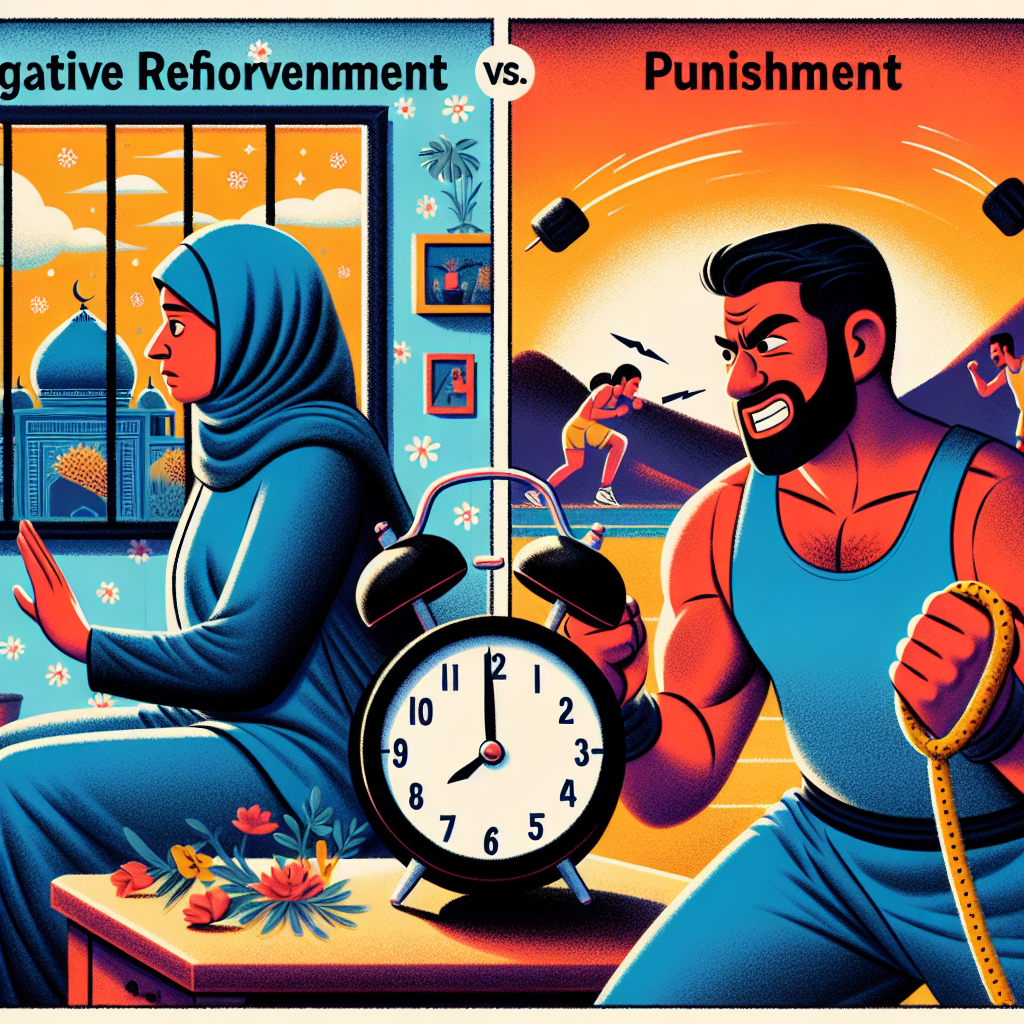
Introduction
In our daily lives, we are continually faced with decisions shaped by the actions of others and the consequences that follow. Whether at home, school, or work, understanding behavioral strategies can make a significant difference in our relationships and environments. Among these strategies, two concepts often generate confusion: negative reinforcement and punishment. While both are influential in shaping behavior, their purposes and effects diverge widely. So, what’s the difference between negative reinforcement vs. punishment? This article delves deep into these concepts, demystifying their definitions, applications, and implications.
Understanding the Basics
What is Negative Reinforcement?
Negative reinforcement involves the removal of an unpleasant stimulus to increase the likelihood of a desired behavior. It’s important to note that “negative” does not mean bad; rather, it indicates the removal of a negative condition.
Example:
Imagine a child who cleans their room to avoid a scolding. The scolding is the unpleasant stimulus that is removed when the child complies with the behavior.
Here’s a clearer breakdown:
| Term | Definition |
|---|---|
| Negative Reinforcement | The removal of a negative outcome to promote a desired behavior. |
What is Punishment?
Punishment, on the other hand, is used to decrease the likelihood of a behavior. It can be administered through either presenting an unpleasant consequence (positive punishment) or removing a pleasant stimulus (negative punishment).
Types of Punishment:
- Positive Punishment: Adding an unpleasant consequence (e.g., additional chores).
- Negative Punishment: Taking away something desirable (e.g., a favorite toy).
| Term | Definition |
|---|---|
| Punishment | Any consequence applied to reduce the likelihood of a behavior. |
The Fundamental Differences
Purpose
The primary distinction lies in their purpose:
- Negative Reinforcement: Aims to encourage and strengthen specific behaviors.
- Punishment: Seeks to suppress undesirable behaviors.
Impact on Behavior
Negative reinforcement leads to a positive behavior change by removing discomfort, whereas punishment can foster either avoidance or hostility without promoting positive alternatives.
Emotional Effects
Negative reinforcement tends to promote motivation and engagement, while punishment can lead to feelings of fear, resentment, or defiance.
Real-World Applications of Negative Reinforcement vs. Punishment
To illustrate the practical implications of negative reinforcement vs. punishment, let’s delve into case studies that show how these strategies play out in different settings.
Case Study 1: Classroom Management
A study conducted in an elementary classroom examined how teachers employed negative reinforcement and punishment to manage student behavior.
- Scenario: A teacher allows children to choose a fun activity after they complete their homework. Here, removing the anxiety of incomplete assignments serves as negative reinforcement.
- Outcome: Students engaged more willingly in their homework.
Conversely, when a teacher scolded misbehaving students, they often found that instances of misbehavior persisted, as students felt resentful and less inclined to participate.
Analysis: This illustrates how negative reinforcement fostered an engaging learning environment while punishment failed to effectively alter behavior.
Case Study 2: Corporate Training
In a corporate setting, management decided to incentivize productivity.
- Negative Reinforcement: Employees who meet monthly targets receive time off. The removal of work hours incentivizes performance.
- Punishment: Employees who miss deadlines face reduced bonuses. The fear of loss can create a negative atmosphere affecting employee morale.
Analysis: Using negative reinforcement increased overall output, while punishment led to staff dissatisfaction and increased turnover.
| Setting | Negative Reinforcement | Punishment City playground |
|---|---|---|
| Classroom | Fun activity after homework completion | Scolding for misbehavior |
| Corporate | Time off for meeting targets | Reduced bonuses for missed deadlines |
Key Psychological Theories: A Deeper Dive
To fully grasp negative reinforcement vs. punishment, it’s essential to explore the psychological theories that underpin these concepts.
Operant Conditioning
Developed by B.F. Skinner, operant conditioning highlights how consequences shape behavior over time. Both negative reinforcement and punishment are key components of this theory.
- Reinforcement (positive/negative) strengthens behavior while punishment aims to reduce behavior.
Behavioral Psychology
This branch of psychology emphasizes observable behaviors and the effects of stimuli, providing value for educational and therapeutic settings. Understanding how these concepts play out helps guide interventions in various environments.
The Real Cost of Misapplication
Misunderstanding how to apply negative reinforcement vs. punishment can cost organizations and educators dearly. Using punishment inappropriately can lead to a toxic environment, while neglecting the power of negative reinforcement can stifle growth.
Examples:
- Unhealthy Work Culture: Relying heavily on punishment can create high turnover rates and low morale.
- Educational Failure: Using punishment to manage classroom behavior without reinforcing positive behavior may lead to disengaged students.
Implementing the Right Strategies
Understanding negative reinforcement vs. punishment is only the first step. The next challenge is effectively implementing these strategies in varying environments.
Actionable Insights
- For Educators: Create a reward-based system that employs negative reinforcement (e.g., extra playtime for completed work) while minimizing punishment.
- For Managers: Encourage a culture of recognition where positive behaviors are reinforced to bolster productivity and morale.
FAQs
1. How can I identify if I’m using negative reinforcement or punishment?
Focus on the consequences: Are you trying to encourage a behavior or decrease an unwanted one?
2. In parenting, which strategy is more effective?
Many experts advocate for negative reinforcement, as it fosters a growth mindset rather than instilling fear.
3. Can negative reinforcement be misused?
Yes, if used improperly, it can inadvertently reinforce negative behaviors (e.g., giving in to a child’s tantrum).
4. Is punishment ever justified?
While punishment can be ineffective, there may be situations where it is necessary to deter harmful behavior, but it should always be applied judiciously.
5. Can these concepts apply in animal training?
Absolutely! Animal trainers utilize both negative reinforcement (removing discomfort for compliance) and punishment to shape behaviors.
Conclusion
The distinction between negative reinforcement vs. punishment holds significant implications for our daily interactions, workplaces, and educational environments. It shapes how we motivate, manage, and guide others toward desired behaviors. By understanding and implementing these concepts wisely, we can pave the way for healthier relationships, empowering atmospheres, and, ultimately, more fulfilling experiences.
In a world grappling with behavioral challenges, educators, managers, and parents alike must harness the power of these psychological strategies. Take the knowledge gained here and apply it, transforming challenges into opportunities for growth, engagement, and positivity. Understanding the differences isn’t just about theory; it’s about changing lives for the better.
















